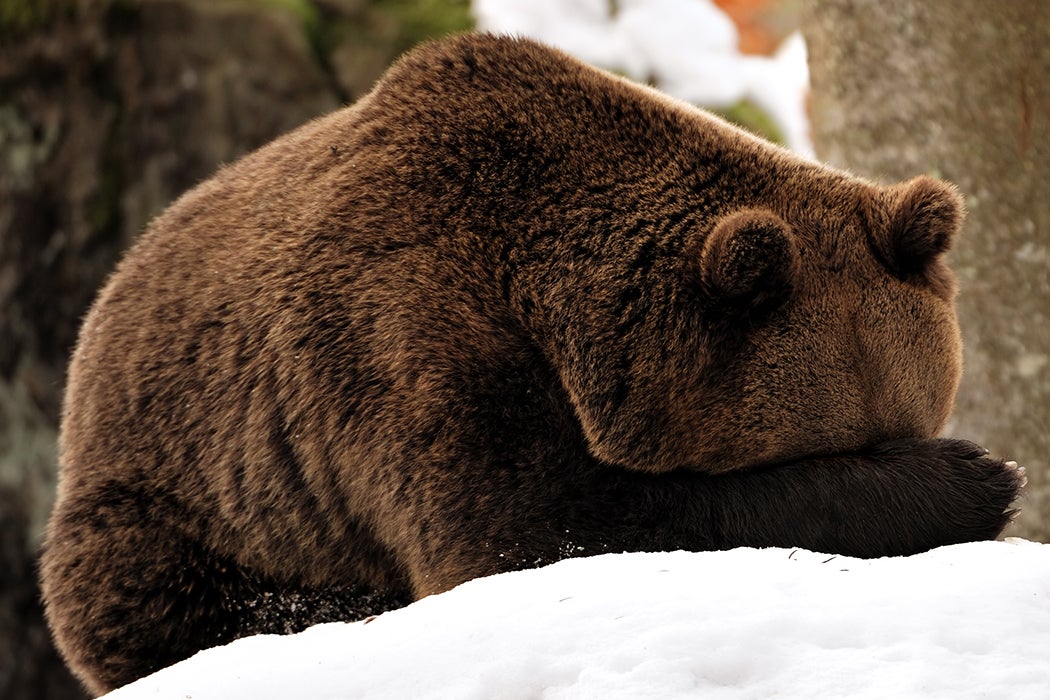Alaska’s Katmai National Park is home to hundreds of bears. In the autumn, bears rush to fatten up in preparation for a long winter. In Katmai, the public had the opportunity to vote on which bear became most magnificently obese; Bear Number 409, named “Beadnose,” emerged victorious after a hard-fought battle. But gaining hundreds of pounds of fat in a couple of months is not easy. How do bears do it?
The amount of weight gained and lost during a bear’s typical year is truly staggering. Writing in Oecologia, researchers Jon E. Swenson, Miha Adamič, Djuro Huber, and Sigbjørn Stokke estimated that an adult bear might gain up to 73 kg in the time between emerging from hibernation in spring and returning to hibernation in late fall: a massive 36 percent gain.
The females, being smaller than males, gained less weight in overall terms but more on a percentage basis. Almost all of the gains are lost again during hibernation. Bears in the north, where winter conditions last longer, gain more weight than those in more southerly populations. This is likely because they need greater reserves to last during a longer hibernation.
Over the course of the year, a bear’s job is to sleep and then eat constantly in order to sleep again. At first glance, this sounds like the life of slothful, gluttonous dreams, but gaining so much weight so quickly is actually hard work. Bears must be strategic. Writing in Oikos, Charles T. Robbins and colleagues examined foraging habits in wild and captive bears. They found that even though fatty salmon provided the most energy and potential for growth, bears did not spend all their time foraging on salmon. In addition to salmon, the bears spent hours every day foraging on less nutritious and more labor-intensive fruit.
Get Our Newsletter
The reason is unclear. It’s possible that the bears needed the fiber from fruit, or that they wanted a break from salmon. But models suggest that the bears mixed their fruit and fish intake to just the right proportions in order to maximize their growth and weight gain. The combination proved to optimize growth above a diet of just fish or just fruit. Larger bears tended to eat a larger proportion of fish than smaller bears. But all the bears studied ate a combination of foods that was perfect for them, even if at first glance there might be more efficient pathways to weight gain. As energy used for finding food is subtracted from the gross intake, there must be other considerations including efficiency that go into each bear’s calculations.
According to Robbins et al., bears might forage fifteen hours or more per day in order to achieve these dizzying heights of mass. For Beadnose and her companions, getting fat enough to sleep all winter is hard work.







